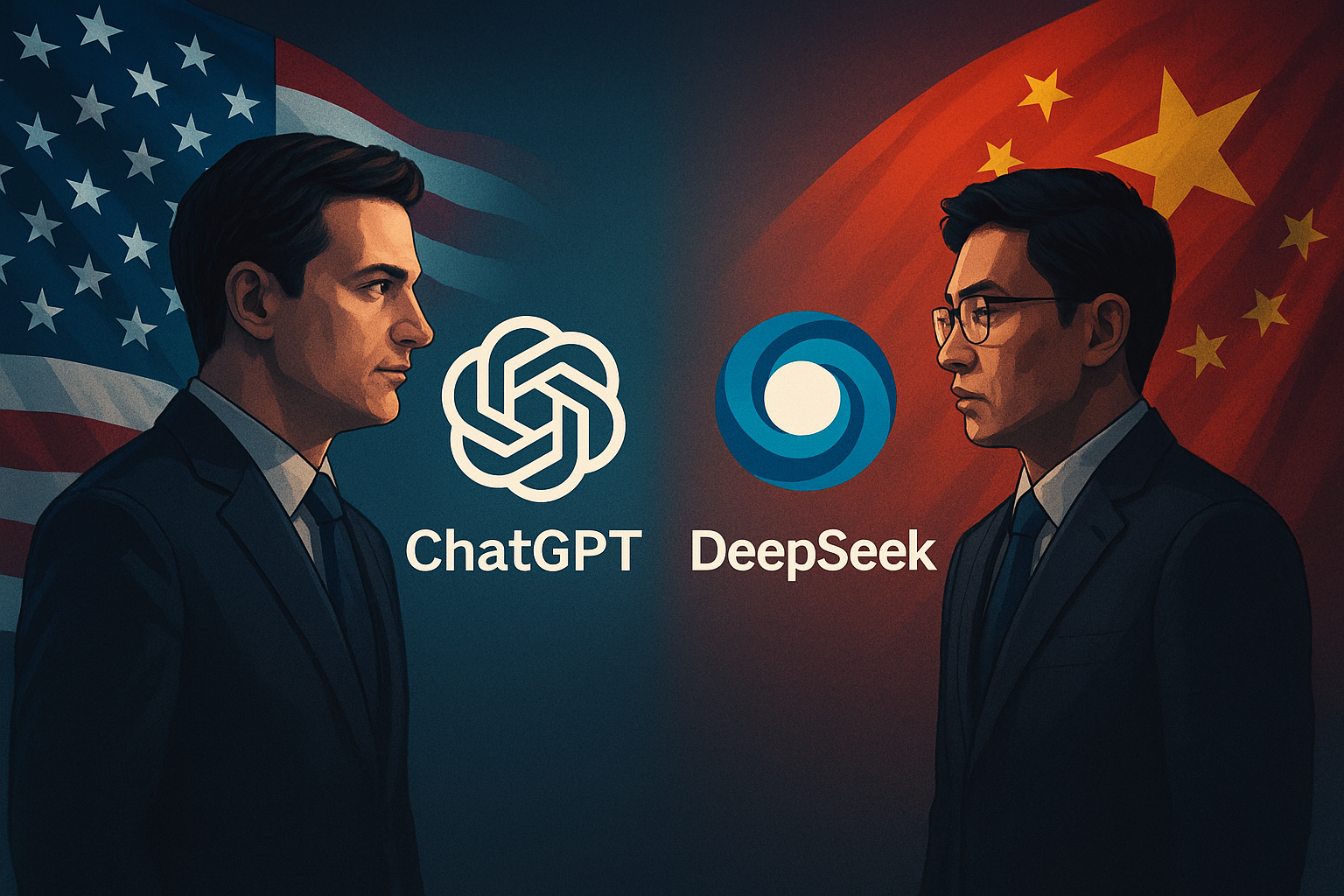OpenAI drops two powerful open-source models to challenge DeepSeek, ushering in a new era of accessible AI innovation.

Report by GlobalTimesAI.com | August 5, 2025
OpenAI has just released its first open-weight models since GPT‑2: GPT‑oss‑120b and GPT‑oss‑20b. These freely available models mark a strategic pivot in response to the rise of Chinese rival DeepSeek and other open‑source players. The announcement signals renewed focus on transparency, affordability, and customization in the global AI race.
What Changed: New Models vs. Old Ones
- Open-weights: Unlike most of OpenAI’s proprietary systems, these models allow full access to parameter weights for developers to inspect and fine-tune.
- Two sizes:
- GPT‑oss‑120b delivers performance comparable or superior to OpenAI’s o3‑mini and o4‑mini models.
- GPT‑oss‑20b can run locally on consumer hardware with 16GB of memory, ideal for offline or edge usage.
- Cross-functional: GPT‑oss supports chain-of-thought reasoning, code generation, agent-like web browsing, and integration with AI tools.
DeepSeek’s Impact: What OpenAI Is Reacting To
- DeepSeek-R1, launched in January 2025, shocked the industry by matching ChatGPT-level benchmarks while costing only ~$6M to train, far less than OpenAI’s multi-billion-dollar models.
- Its mobile AI assistant became the top free app on the U.S. iOS App Store within days, triggering a ~17–18% drop in Nvidia’s market cap.
- The success affirmed DeepSeek’s open-weight strategy as both affordable and disruptive, prompting calls for U.S.-based open alternatives.
How GPT-OSS Competes with DeepSeek and Others
| Feature | GPT‑oss‑120b / 20b | DeepSeek-R1 |
|---|---|---|
| Open‑weight | ✅ Yes | ✅ Yes |
| Runs locally | On consumer hardware (20b) | Likely central servers |
| Performance | Matches o3‑mini, o4‑mini | Comparable to GPT‑4 and o1 |
| License | Apache 2.0 | MIT |
| Cost efficiency | Designed to be low-cost | Trained at ~$5.6M on 2,000 GPUs |
| Support/claims | OpenAI safety-tested thoroughly | Less transparency on misuse resilience |
- OpenAI highlights strong safety testing: simulated malicious use, internal fine-tuning, and external expert review.
- AWS recently announced that these models are available via Bedrock and SageMaker, offering cost efficiency and flexible deployment, positioning GPT‑oss‑120b at ~3× lower cost than Google Gemini and cheaper than DeepSeek.
What Makes GPT‑OSS Unique Compared to Competitors?
- U.S.-based open alternative: DeepSeek’s rise led OpenAI to return to open-source roots, aiming to promote technologies grounded in democratic values.
- Commercial flexibility: Apache 2.0 license allows redistribution and commercial use, unlike more restrictive proprietary models.
- On-device viability: GPT‑oss‑20b is optimized for laptops and ARM chips, enabling offline deployment—a core advantage for privacy-conscious deployments.
Who Wins? Benchmark & Safety Comparisons
- Independent tests show that DeepSeek excels at code generation, outperforming ChatGPT o1 in accepted solution rates. However, ChatGPT still excels on benchmark suites such as Codeforces on harder tasks.ar
- Safety studies such as ASTRAL show DeepSeek‑R1 produces unsafe content ~12% of the time, while OpenAI’s o3‑mini (and likely GPT‑oss) maintain lower unsafe response rates (~1.2%).
What’s Next for OpenAI and Its Rivals?
- OpenAI joins AWS, Azure, and Hugging Face to make GPT‑oss models widely available, accelerating developer access and cross-platform use.
- The company is investing in The Stargate Project, a $500 billion AI compute infrastructure initiative with the US government and partners like Oracle and SoftBank.
- OpenAI continues to innovate proprietary agents like Operator (web automation) and advanced versions of ChatGPT, while offering GPT‑oss as a flexible alternative.
Strategic Implications: Democratizing AI or Risking Fragmentation?
OpenAI’s shift reflects:
- A response to DeepSeek’s “Sputnik moment”, urging faster democratization of LLMs globally.
- A bid to prevent U.S. developers from relying on foreign open models by offering a transparency-aligned alternative.
- Yet open-weight models carry inherent risks, and OpenAI mitigated these by delaying release and engaging in misuse testing.
Final Takeaway: The Road Ahead
OpenAI’s GPT‑oss‑120b and 20b are more than technical achievements—they’re a strategic recalibration in response to DeepSeek’s disruption. OpenAI says it aims to safeguard alignment, support U.S. innovation, and offer transparent, customizable AI options for businesses and governments.
As DeepSeek, Meta’s Llama, Alibaba’s Qwen, and Mistral evolve, the race now isn’t just about performance, but openness, safety, cost, and philosophical alignment. GPT‑oss may ensure OpenAI retains leadership in the open-weight model space, balancing innovation and control in equal measure.
Disclaimer:
All information in this article is sourced from credible references including Wired, The Verge, Semafor (for OpenAI releases), Wikipedia, Reuters, Nature, Guardian (for DeepSeek background), arXiv (for benchmarking and safety), Times of India (for AWS support), and Wikipedia’s 2025 AI timeline (for strategic context).